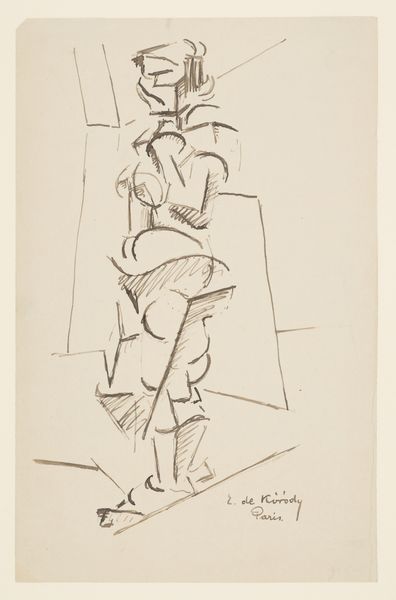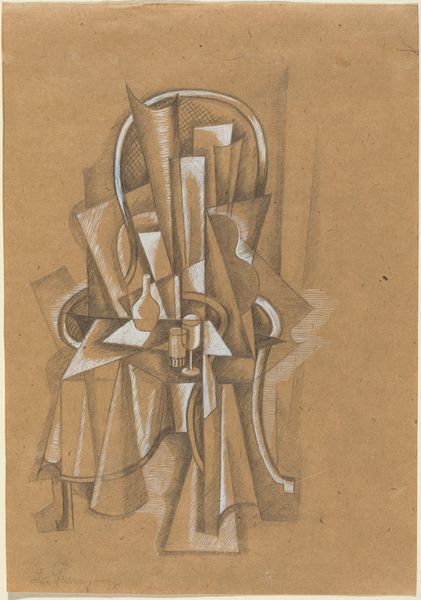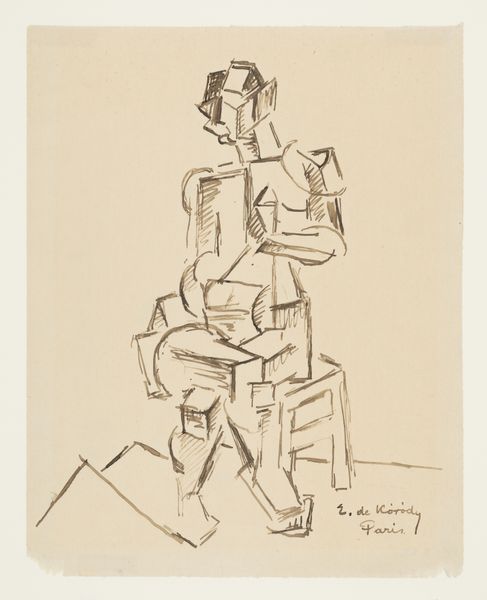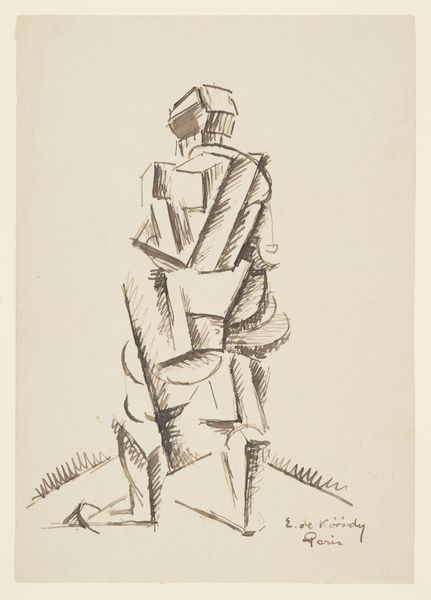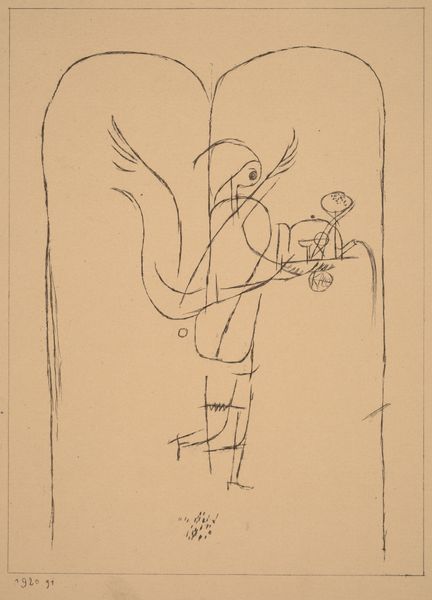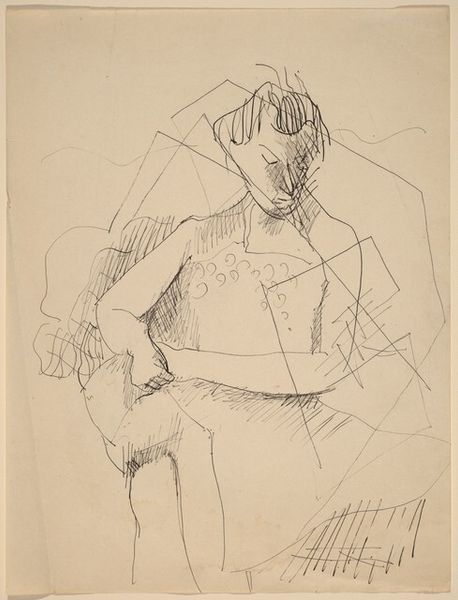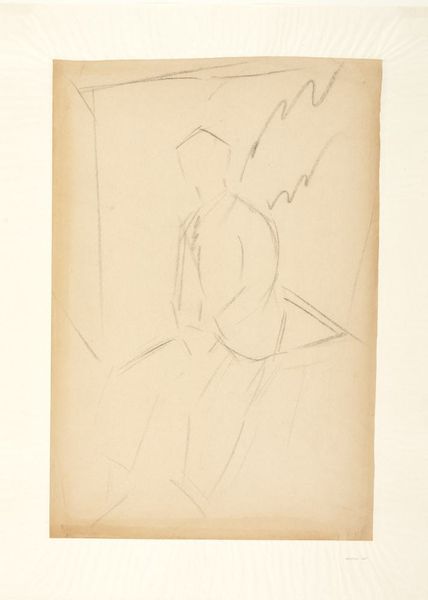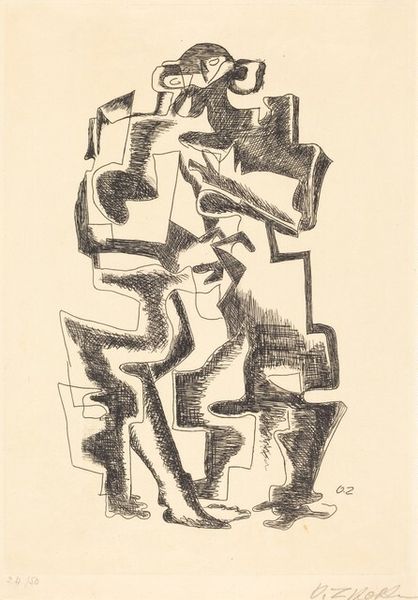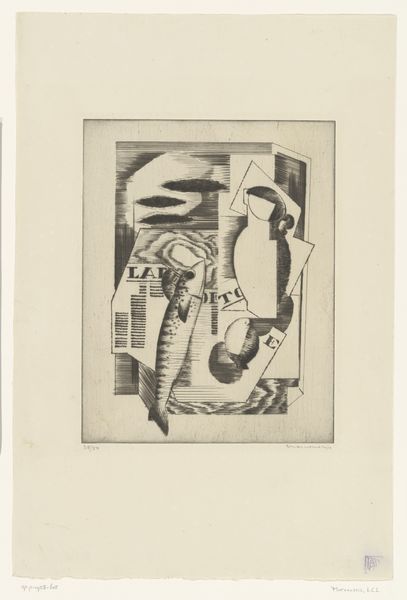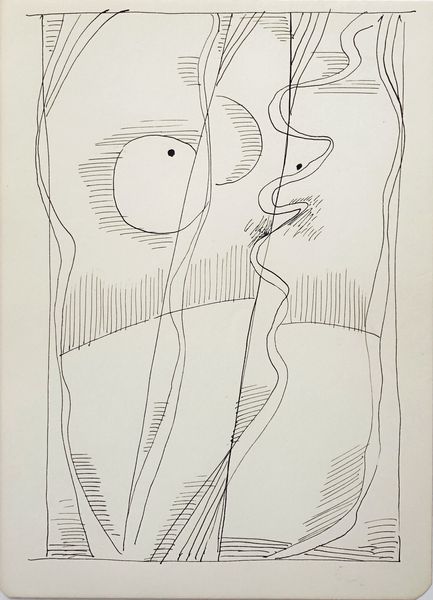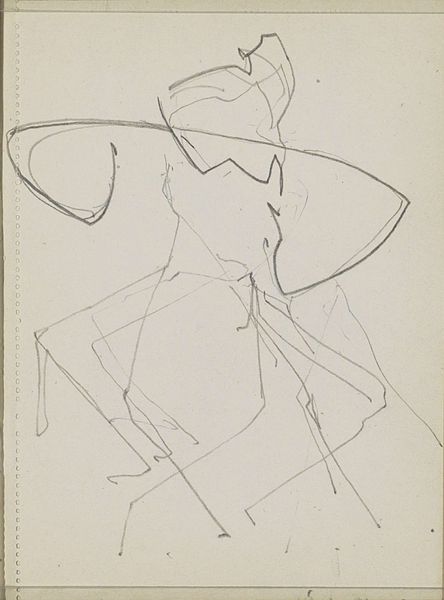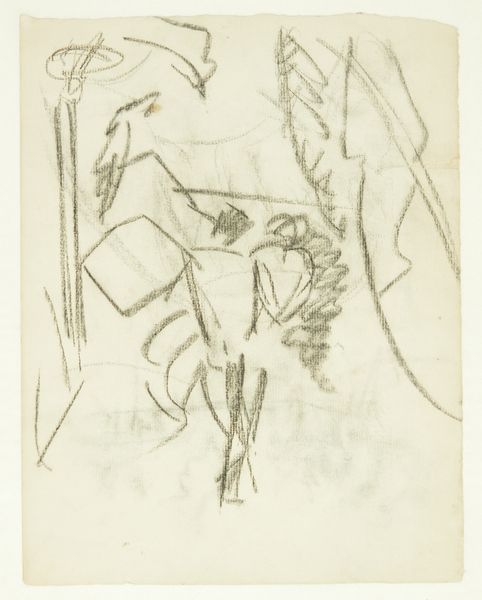
Dimensions: 12 1/8 × 9 5/8 in. (30.8 × 24.4 cm)
Copyright: Public Domain
Editor: This is Elemér de Kórödy's "Standing Figure," created in 1913 with pencil. The fragmented shapes and sharp angles definitely give off a Cubist vibe, but something about the soft shading keeps it from feeling too harsh. How would you analyze this piece from a formalist point of view? Curator: We can begin by considering the inherent structure. The artist’s fracturing of the human figure into geometric forms immediately challenges our perception of form. Note the strategic use of shading: it is not used to create depth, but rather to highlight certain planes and obscure others, furthering the fragmentation. How does this manipulation of light affect your understanding of the subject? Editor: I see how the shading contributes to the disjointed effect. Instead of suggesting roundness or volume, it just emphasizes the flat, intersecting planes. So, you're saying that the subject is almost secondary to the formal arrangement? Curator: Precisely. While we can identify it as a "Standing Figure," Kórödy is fundamentally exploring the relationships between lines, shapes, and tones. Observe how the angularity echoes throughout the composition, creating a sense of dynamic tension. Consider the visual effect achieved by the repetition and variation of these fragmented forms. Editor: The repetition really creates a sense of movement even though it is a static figure. The lines pull your eyes in different directions across the surface of the work. It's amazing how much can be communicated just through line and form. I think I appreciate Cubism a lot more now! Curator: And that appreciation comes from engaging with the internal logic of the artwork, isolating the forms from conventional external context, as well as noting how the internal composition has a significant impact on visual movement.
Comments
No comments
Be the first to comment and join the conversation on the ultimate creative platform.
